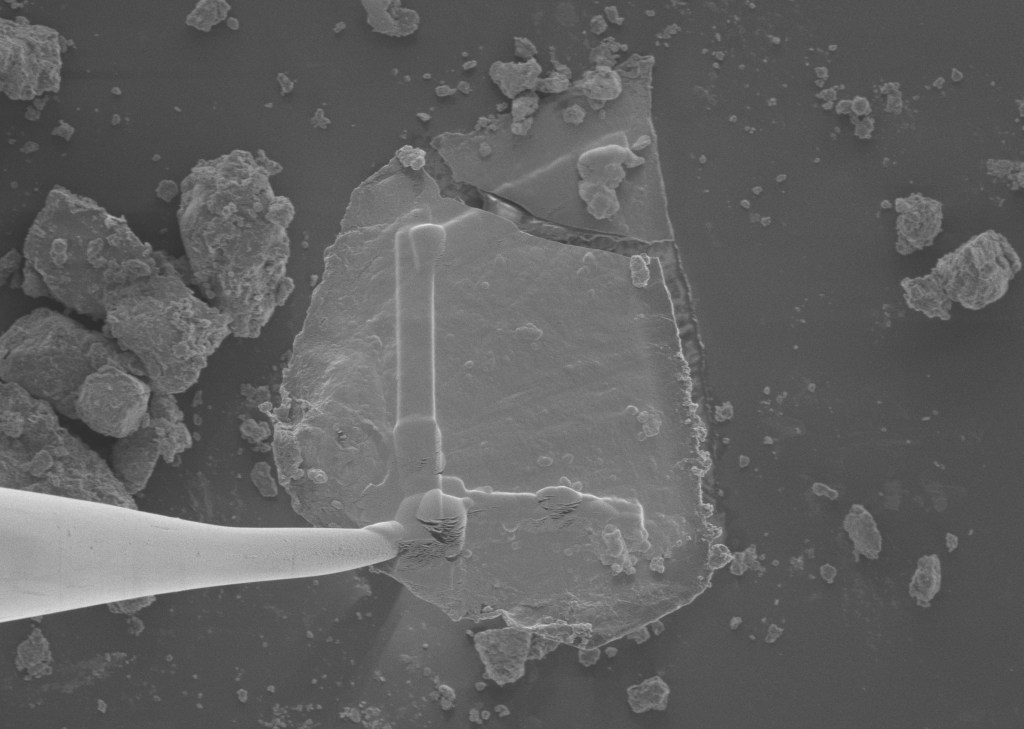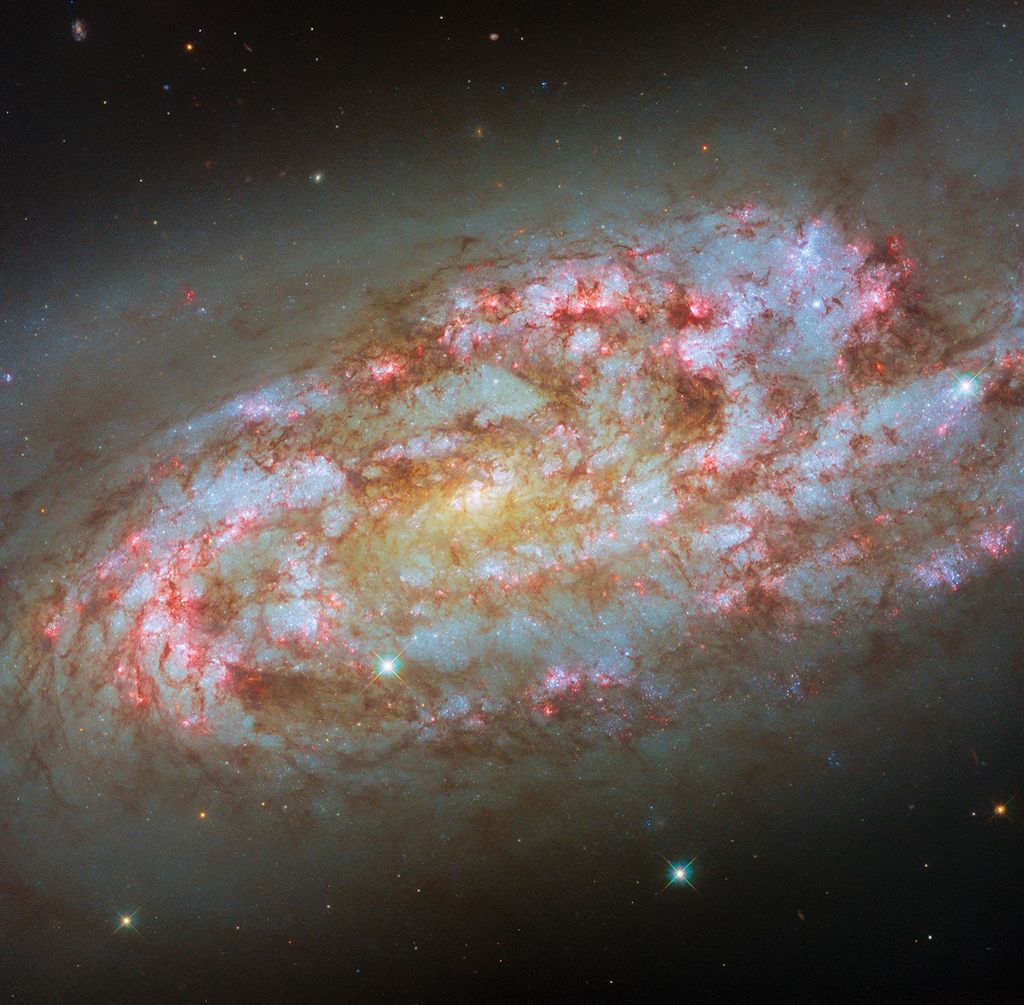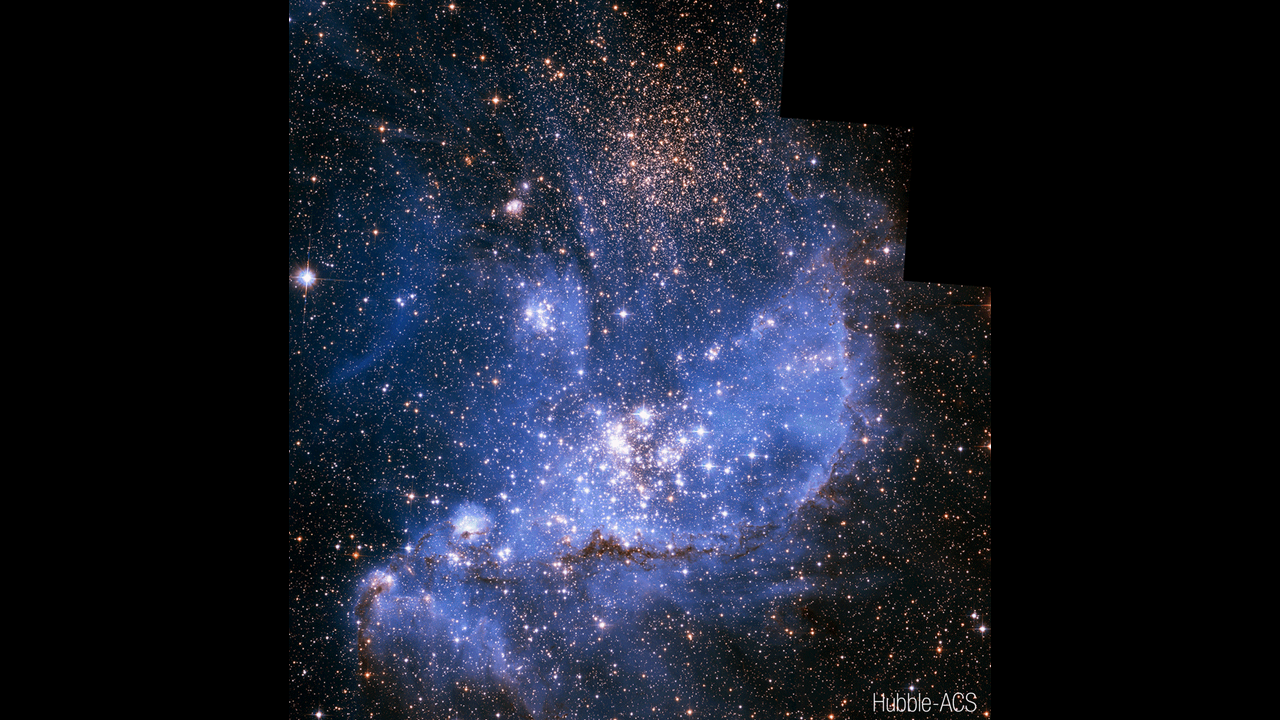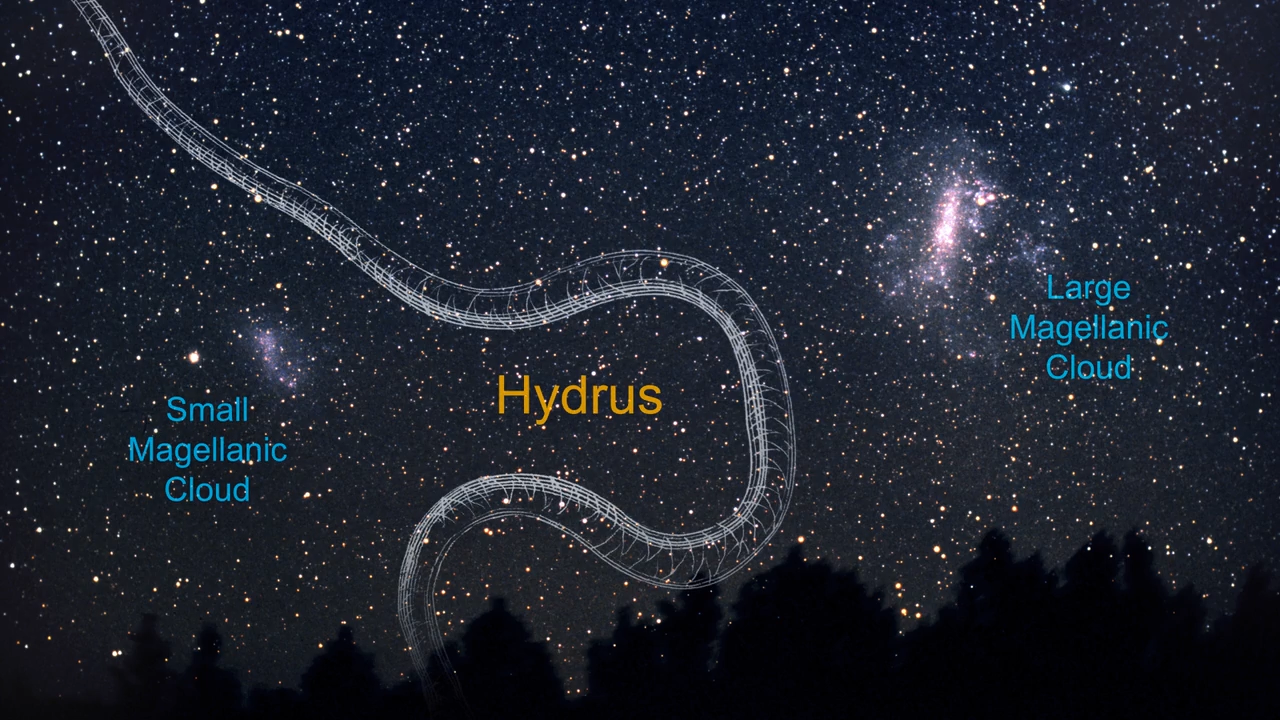1 min read
NGC 346 (MIRI Image)

This new infrared image of NGC 346 from NASA’s James Webb Space Telescope’s Mid-Infrared Instrument (MIRI) traces emission from cool gas and dust. In this image blue represents silicates and sooty chemical molecules known as polycyclic aromatic hydrocarbons, or PAHs. More diffuse red emission shines from warm dust heated by the brightest and most massive stars in the heart of the region. Bright patches and filaments mark areas with abundant numbers of protostars. This image includes 7.7-micron light shown in blue, 10 microns in cyan, 11.3 microns in green, 15 microns in yellow, and 21 microns in red (770W, 1000W, 1130W, 1500W, and 2100W filters, respectively).
About the Object
- R.A. PositionR.A. PositionRight ascension – analogous to longitude – is one component of an object's position.00:59:04.95
- Dec. PositionDec. PositionDeclination – analogous to latitude – is one component of an object's position.-72:10:09.15
- ConstellationConstellationOne of 88 recognized regions of the celestial sphere in which the object appears.Tucana
- DistanceDistanceThe physical distance from Earth to the astronomical object. Distances within our solar system are usually measured in Astronomical Units (AU). Distances between stars are usually measured in light-years. Interstellar distances can also be measured in parsecs.200,000 light-years away (61,300 parsecs)
- DimensionsDimensionsThe physical size of the object or the apparent angle it subtends on the sky.This image is about 3.4 arcminutes across (200 light-years).
About the Data
- Data DescriptionData DescriptionProposal: A description of the observations, their scientific justification, and the links to the data available in the science archive.
Science Team: The astronomers who planned the observations and analyzed the data. "PI" refers to the Principal Investigator.This image was created with Webb data from proposal: 1227 (M. Meixner). Image Processing: Alyssa Pagan (STScI)
- InstrumentInstrumentThe science instrument used to produce the data.MIRI
- Exposure DatesExposure DatesThe date(s) that the telescope made its observations and the total exposure time.10 October 2022
- FiltersFiltersThe camera filters that were used in the science observations.F770W, F1000W, F1130W, F1500W, F2100W
- Object NameObject NameA name or catalog number that astronomers use to identify an astronomical object.NGC 346
- Object DescriptionObject DescriptionThe type of astronomical object.Cluster and Nebulosity in the Small Magellanic Cloud
- Release DateOctober 10, 2023
- Science ReleaseNASA’s Webb Captures an Ethereal View of NGC 346
- CreditImage: NASA, ESA, CSA, STScI, Nolan Habel (NASA-JPL); Image Processing: Patrick Kavanagh (Maynooth University)

These images are a composite of separate exposures acquired by the James Webb Space Telescope using the MIRI instrument. Several filters were used to sample wide wavelength ranges. The color results from assigning different hues (colors) to each monochromatic (grayscale) image associated with an individual filter. In this case, the assigned colors are: Red: F2100W, Yellow: F1500W, Green: F1130W, Cyan: F1000W, Blue: F770W
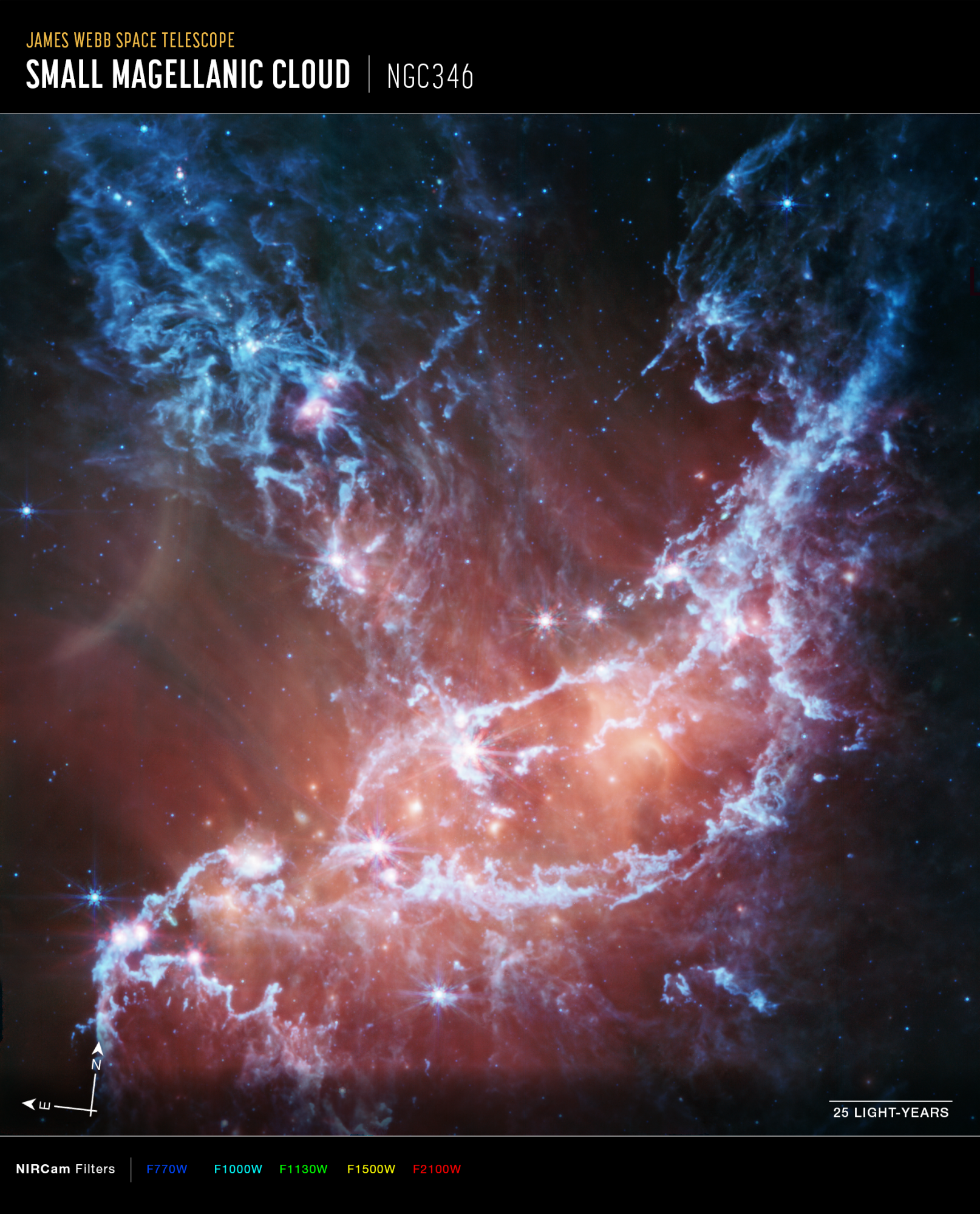
Related Images & Videos
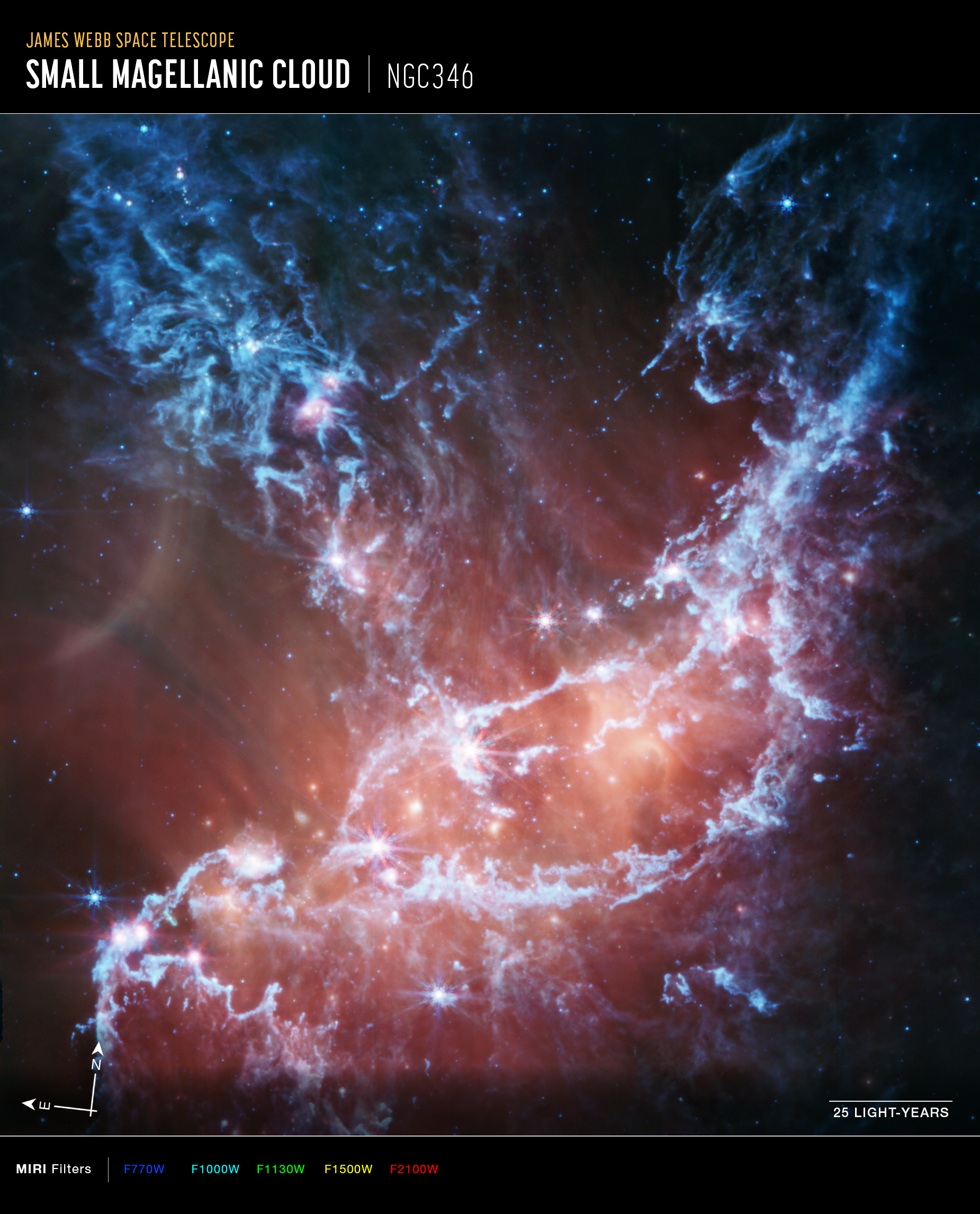
NGC 346 (MIRI Compass Image)
This image of NGC 346, captured by Webb’s Mid-Infrared Instrument (MIRI), shows compass arrows, scale bar, and color key for reference. The north and east compass arrows show the orientation of the image on the sky. Note that the relationship between north and east on the sky...
Share
Details
Laura Betz
NASA’s Goddard Space Flight Center
Greenbelt, Maryland
laura.e.betz@nasa.gov
NASA, ESA, CSA, STScI, Nolan Habel (NASA-JPL)
Patrick Kavanagh (Maynooth University)


